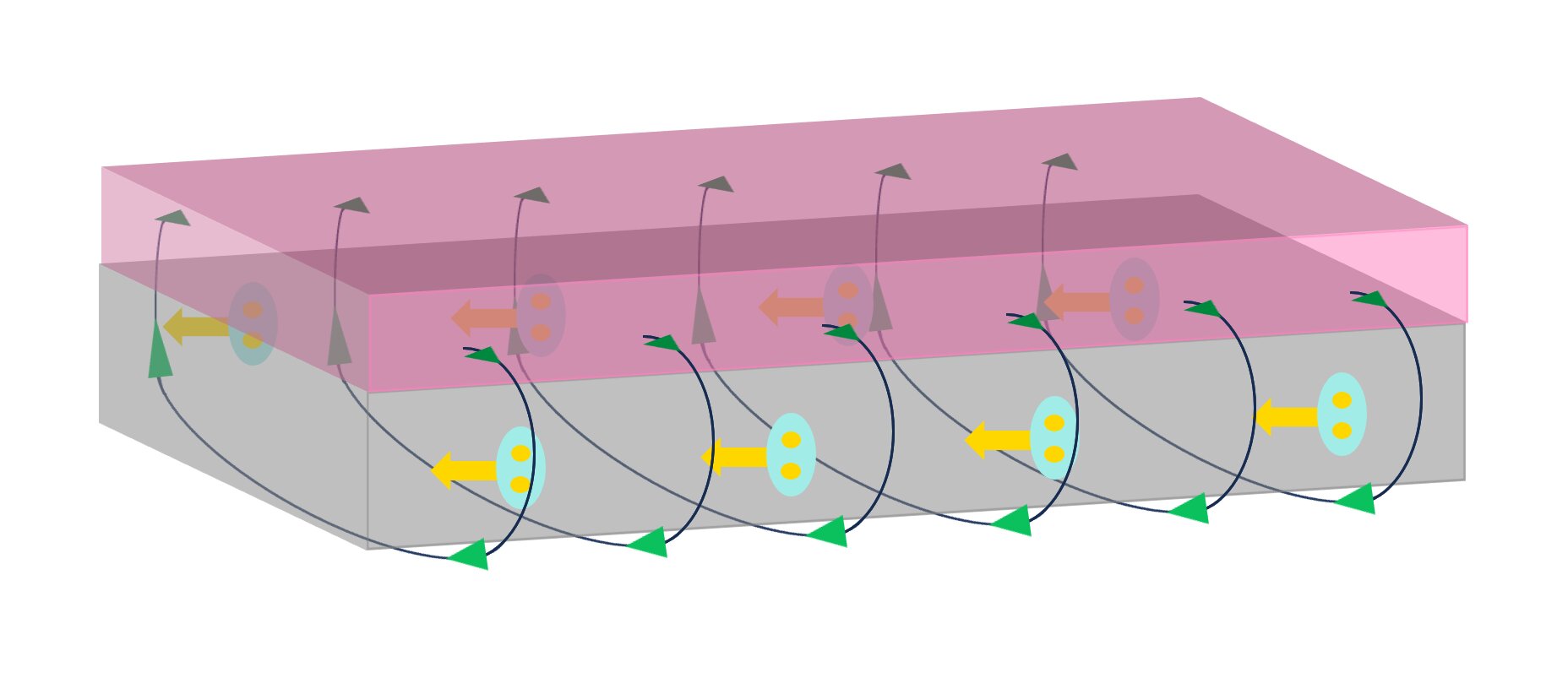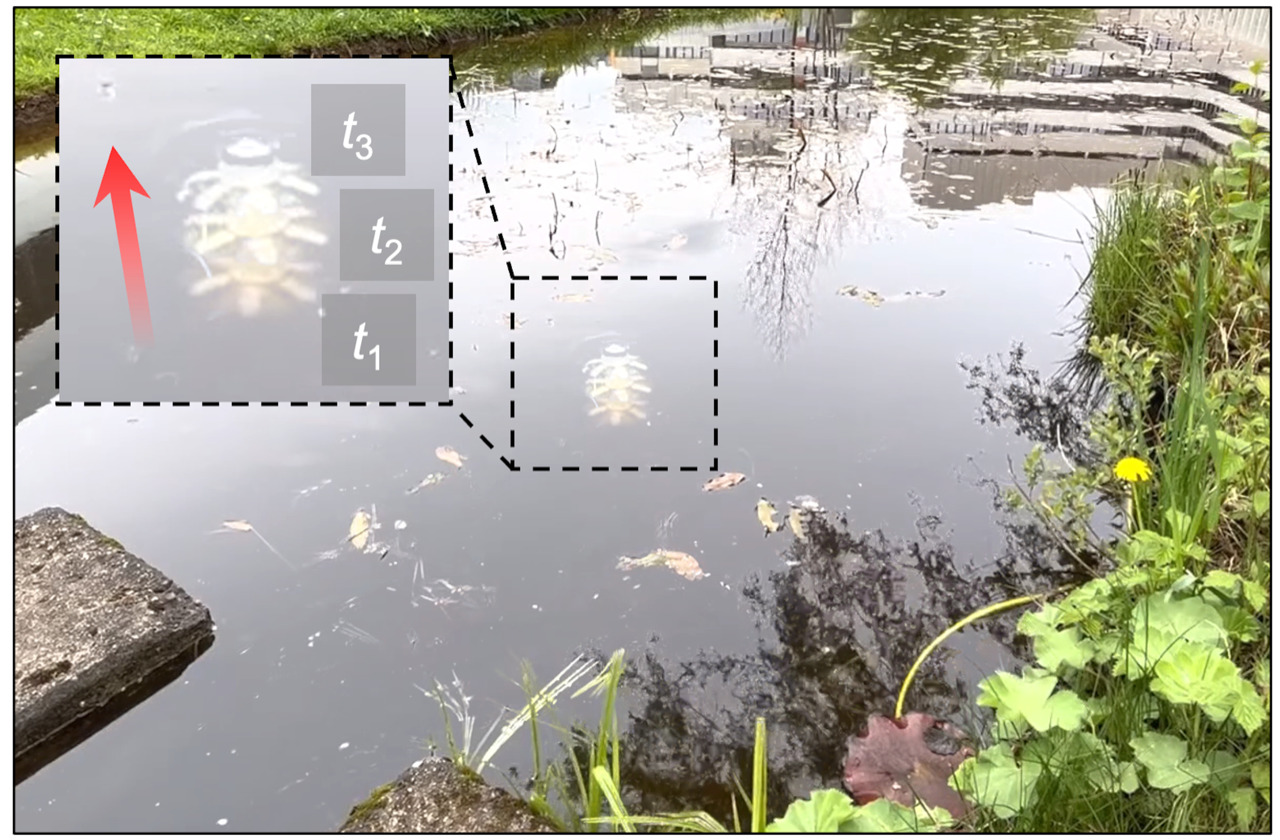
Schematic illustration of the superconducting highway for energy transport and storage and superconductor levitation for the transport of people and goods.
CREDIT: Vakaliuk et al.
Revolutionary design could combine superconductor levitation, lossless electricity transmission, and liquid hydrogen transportation into one system.
Superconductors can conduct electricity without any resistance or power loss, and they can effortlessly cause magnets to levitate above them. These properties would make superconductors useful for high-speed trains or long-distance power transmission, except for one glaring problem: superconductors only work at low temperatures, more than a hundred degrees below zero.
This one requirement makes building a hyperefficient electrical grid or high-speed rail network very expensive. Unless, that is, a superconductor network could accomplish both tasks at the same time.
In APL Energy, by AIP Publishing, researchers from the University of Houston, Adelwitz Technologiezentrum GmbH, and the Leibniz Institute for Solid State and Materials Research developed a proof of concept for a superconducting highway that could transport vehicles and electricity, cooling the necessary superconductors with a pipeline of liquid hydrogen.
Most magnetic levitation designs feature the superconductor inside the vehicle, which is suspended above a magnetic track. The authors decided to flip that arrangement upside down, putting the superconductor on the ground and giving each vehicle a magnet. The result is a system with multiple uses, placing it within the realm of affordability.
“Superconductor-levitated magnetic vehicles, instead of magnet-levitated superconducting vehicles, can provide additional benefits such as electrical power transmission and storage,” said author Zhifeng Ren. “We developed a new superconducting system that can transport and store a huge amount of energy and also transport people and goods with speeds of at least 400 miles per hour.”
Their design solves the problem of superconductor cooling with a liquid hydrogen pipeline. Hydrogen is a promising clean fuel source with a complex handling issue: It is a gas at room temperature, so transporting and storing it involves either dangerous pressurized tanks or costly cryogenic temperatures. In the team’s proposal, the cost of cooling the superconductor and the cost of transporting hydrogen become the same.
Using a scale model in the lab, they demonstrated that these applications can coexist, and now they hope to build a full-scale demonstration. The authors envision their system would sit underneath existing highways to make use of current infrastructure.
“People can drive onto the superconducting highway any time without waiting for a train or airplane, and modifying the existing highways means there is no need to acquire land for the tracks,” said Ren. “With enough financial support, we could make a working system over a relatively short distance, like from Houston to Austin.”
Original Article: Transforming highways for high-speed travel and energy transport
More from: University of Houston | Leibniz Institute for Solid State and Materials Research
The Latest Updates from Bing News
Go deeper with Bing News on:
Superconducting highway
- Superconducting devices articles from across Nature Portfolio
Superconducting devices are electronic devices that harness the zero-resistance properties of superconductors. Superconducting devices are used for highly sensitive optical sensors, detectors of ...
- Closures on US Highway 169, State Highway 65 this weekend
Highway 169 will close in both directions between Interstate 394 in Golden Valley to I-94 in Brooklyn Park. The closure will start at 10 p.m. Friday and last through 5 a.m. Monday. Drivers can use ...
- Hwy. 26 improvements begin Monday
Gov. Tony Evers signed a $3.2 million contract to resurface Highway 26 between Hwy. 33 and Milligan Road in Dodge County. Preliminary work is scheduled to begin Monday. A public meeting will be ...
- Highway 1 collapse in Big Sur was caused by weather, waves, gravity. That’s the good news
Federal geologists blame the latest collapse of Highway 1 in Big Sur on a relatively common rockfall caused by weather, waves and gravity that eventually cracked the steep cliffside beneath the ...
- Protesters blocked highway entering O’Hare airport
Video posted on social media showed travelers walking on the sides of the highway toward the airport. Chicago police said officers responded to the protest and “multiple people” were taken ...
Go deeper with Bing News on:
Superconductor network
- Chip Industry Week In Review
U.S. workforce hubs; Samsung's V-NAND chip; TSMC's A16 process and SoW; NVIDIA's AI acquisitions; IBM to acquire HashiCorp; China/Japan AI EV partnerships; MIT's secure digital IMC chip; a foundry ...
- Exploring Unconventional Superconductivity in Synthetic and Natural Materials
Superconductivity is a notable discovery that has recently gained significant attention. Conventional superconductors, such as aluminum and niobium, are considered major participants in this domain. 1 ...
- Rush Rare Metals Adds 1,400 Acres to Copper Mountain Project
VANCOUVER, BC / ACCESSWIRE / April 24, 2024 / Rush Rare Metals Corp. (CSE:RSH) ("Rush" or the "Company") is pleased to announce that it has added ...
- 7 Microcaps To Buy Ahead Of Possible Russell 2000 Inclusion
The Russell inclusion for 2024 will add stocks to the index with market caps around $184 million. Read this article to know what this means for investors.
- Reimagining Memory: New Research Reveals That Superconducting Loops Mimic the Brain
Superconducting loops could allow computers to retain and retrieve information more efficiently. Computers work in digits — 0s and 1s to be exact. Their calculations are digital; their processes are ...










